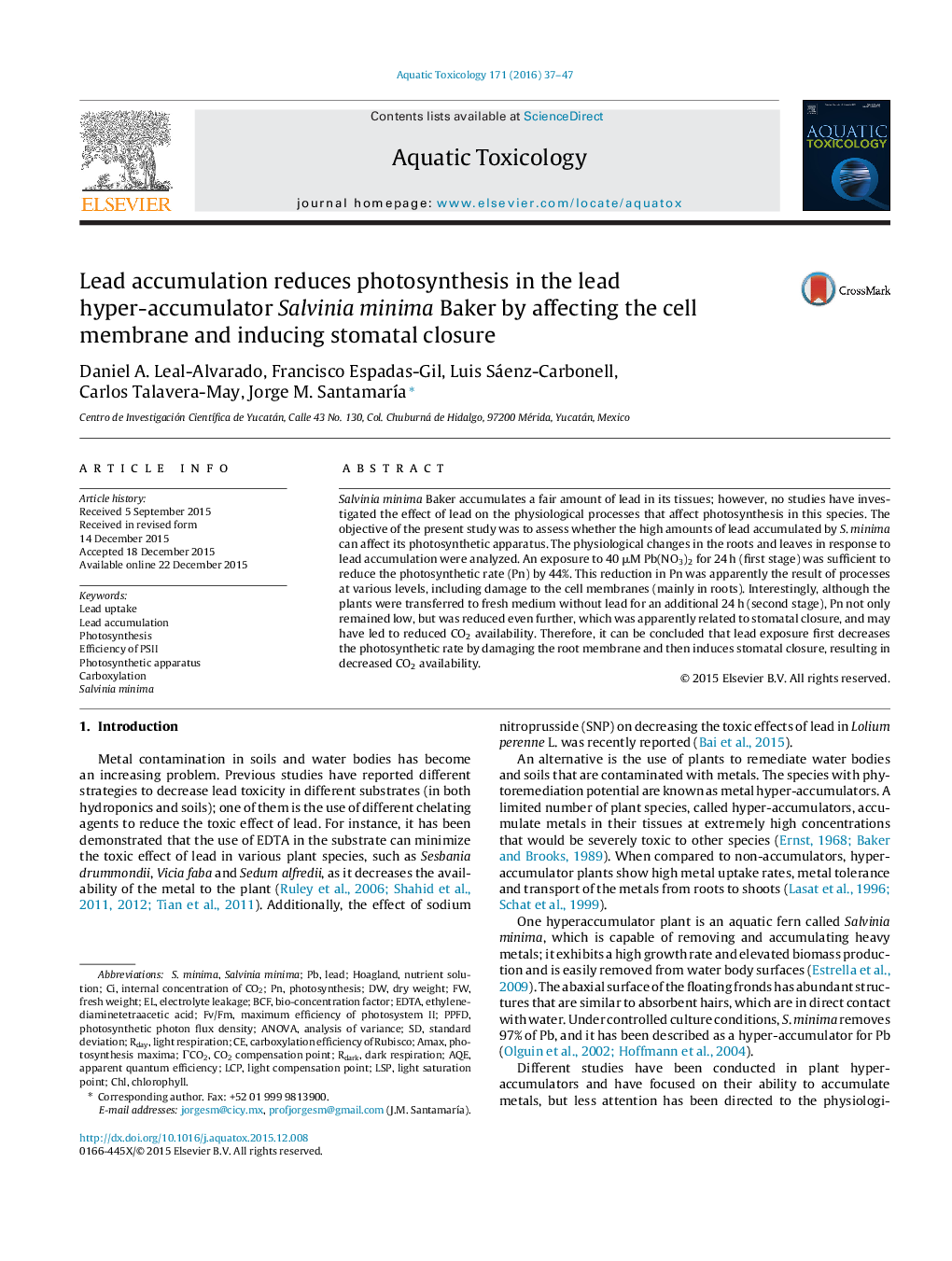| Article ID | Journal | Published Year | Pages | File Type |
|---|---|---|---|---|
| 4528948 | Aquatic Toxicology | 2016 | 11 Pages |
•Salvinia minima has high capacity to take up lead.•At the tested concentration lead reduced S. minima photosynthesis.•The lead-induced reduced photosynthesis was mainly associated to root membrane damage.•The reduced photosynthesis was also associated to lead-induced stomatal closure.
Abs tractSalvinia minima Baker accumulates a fair amount of lead in its tissues; however, no studies have investigated the effect of lead on the physiological processes that affect photosynthesis in this species. The objective of the present study was to assess whether the high amounts of lead accumulated by S. minima can affect its photosynthetic apparatus. The physiological changes in the roots and leaves in response to lead accumulation were analyzed. An exposure to 40 μM Pb(NO3)2 for 24 h (first stage) was sufficient to reduce the photosynthetic rate (Pn) by 44%. This reduction in Pn was apparently the result of processes at various levels, including damage to the cell membranes (mainly in roots). Interestingly, although the plants were transferred to fresh medium without lead for an additional 24 h (second stage), Pn not only remained low, but was reduced even further, which was apparently related to stomatal closure, and may have led to reduced CO2 availability. Therefore, it can be concluded that lead exposure first decreases the photosynthetic rate by damaging the root membrane and then induces stomatal closure, resulting in decreased CO2 availability.
